Search results for: 'fibula'
-
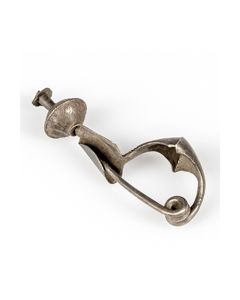 Greek fibula from the colonies in Southern Italy
Greek fibula from the colonies in Southern ItalyLovely silver brooch and piece of jewellery. Late classical to early hellenistic period.
€750 Greek fibula from the colonies in Southern Italy
Greek fibula from the colonies in Southern ItalySilver brooch in near perfect condition. Late classical to early hellenistic period.
Price: on request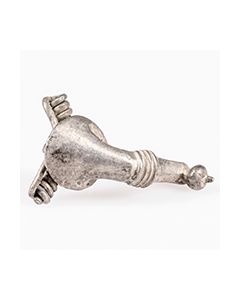 Pannonian trumpet brooch
Pannonian trumpet broochWell preserved Roman fibula made of silver. The type is from the Pannonian provinces of Rome and dates to the 2nd century.
Price: on request Pannonian trumpet brooch
Pannonian trumpet broochWell preserved Roman silver fibula with curved bow. The type is from the Pannonian provinces of Rome and dates to the 2nd century.
Price: on request Group of Italic brooches and artefacts
Group of Italic brooches and artefactsExciting group of 17 bronze objects. These include an Italian serpentine fibula with large disc head, three early Etruscan brooches, and a bronze sheet with a decorative head.
Price: on request Roman gilt crossbow brooch
Roman gilt crossbow broochInteresting silver fibula from the later Roman Imperial period. From the famous Leo Mildenberg collection.
Price: on request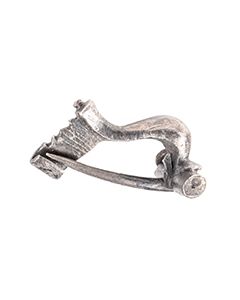 Roman silver knee brooch
Roman silver knee broochNice specimen with characteristic bend in its bow and attached loop and ring. From the Danubian provinces of the Roman Empire.
Price: on request Roman crossbow brooch
Roman crossbow broochVery nice specimen with niello inlays and remains of the original gilding. From the mid 4th century AD. Published in two stardard works on ancient fibulae.
Price: on request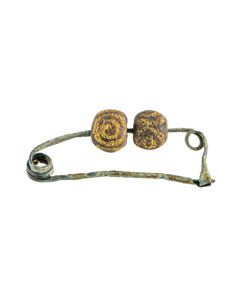 Early Italic brooch decorated with beads
Early Italic brooch decorated with beadsThere rare brooch type from northern Italy is based on predecessors from Greece. The piece is from the famous Richard Hattatt collection and is published in two of his works.
Price: on request Roman silver knee brooch
Roman silver knee broochNice specimen with characteristic bend in its bow and incised decorations. From the Danubian provinces of the Roman Empire.
Price: on request Celtic brooch from Iberia
Celtic brooch from IberiaThe early Celtic brooch dates from the 6th century BC and was found in Spain. This specimen is published in two standard works on ancient brooches.
Price: on request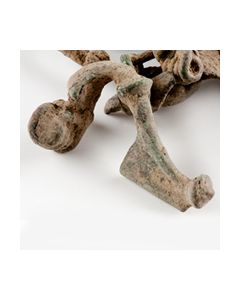 10 römische Fibeln aus Pannonien
10 römische Fibeln aus PannonienDiverse Typen, meist Kniefibel oder ähnliche. Bronze, gute Erhaltung, Nadeln fehlen. Ca. 3. - 4. Jh. n. Chr.
Price: on request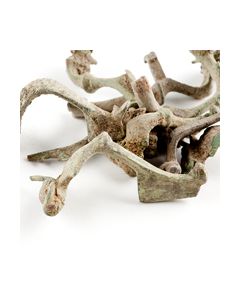 10 römische Fibeln aus Pannonien
10 römische Fibeln aus PannonienDiverse Typen, meist Kniefibel oder ähnliche. Bronze, gute Erhaltung, Nadeln fehlen. Ca. 3. - 4. Jh. n. Chr.
Price: on request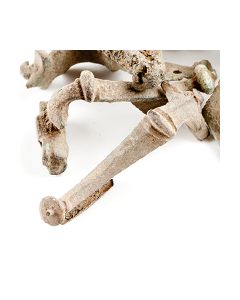 10 römische Fibeln aus Pannonien
10 römische Fibeln aus PannonienDiverse Typen, meist Kniefibel oder ähnliche. Bronze, gute Erhaltung, Nadeln fehlen. Ca. 3. - 4. Jh. n. Chr.
Price: on request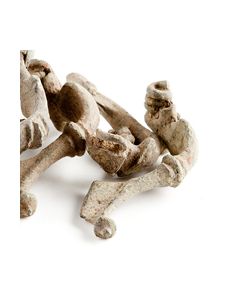 10 römische Fibeln aus Pannonien
10 römische Fibeln aus PannonienDiverse Typen, meist Kniefibel oder ähnliche. Bronze, gute Erhaltung, Nadeln fehlen. Ca. 3. - 4. Jh. n. Chr.
Price: on request 10 römische Fibeln aus Pannonien
10 römische Fibeln aus PannonienDiverse Typen, meist Kniefibel oder ähnliche. Bronze, gute Erhaltung, Nadeln fehlen. Ca. 3. - 4. Jh. n. Chr.
Price: on request 10 römische Fibeln aus Pannonien
10 römische Fibeln aus PannonienDiverse Typen, meist Kniefibel oder ähnliche. Bronze, gute Erhaltung, Nadeln fehlen. Ca. 3. - 4. Jh. n. Chr.
Price: on request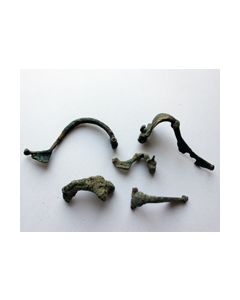 Restbestand - 5 römische Fibeln aus Pannonien
Restbestand - 5 römische Fibeln aus PannonienDiverse Typen. Bronze, gute Erhaltung, Nadeln fehlen. Ca. 3. - 4. Jh. n. Chr. Letzte 5 Fibeln aus dem beliebten Lot.
Price: on request Römische Kniefibel
Römische KniefibelAntike Gewandnadel vom Typ der Kniefibeln. Körper aus schön patinierter Bronze, 35mm lang. 2. Jh. n. Chr., römische Kaiserzeit.
Price: on request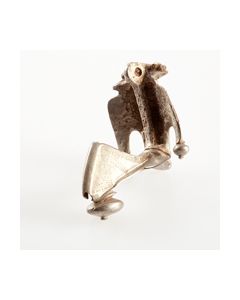 Kräftig profilierte Silberfibel, 2. bis 3. Jh. n. Chr.
Kräftig profilierte Silberfibel, 2. bis 3. Jh. n. Chr.Römische Fibel vom Typ der kräftig profilierten Fibeln. Massives Silber, 34,2g, 100 bis 250 n. Chr. Museumswürdiger Zustand.
Price: on request Keltische Fibel der Latènezeit
Keltische Fibel der LatènezeitAntike Gewandnadel aus Bronze. Variante der Jezerine-Typ-Fibeln, vermutlich aus Süddeutschland, 1. Jh. v. Chr.
Price: on request Römische Silberfibel aus Pannonien
Römische Silberfibel aus PannonienGewandnadel vom Typ der kräftig profilierten Fibeln bzw. der Trompetenfibeln. Spezifische Variante der Jahre 200 bis 250 n. Chr. aus den pannonischen Provinzen.
Price: on request Früher Fibeltyp mit Zierplatte
Früher Fibeltyp mit ZierplatteAntike Fibel mit emaillierter Zierplatte. Schön patinierter Bronzekörper mit reichem Dekor. 2. Jh. v. Chr. bis 1. Jh. n. Chr.
Price: on request Eisenzeitliche, europäische Fibel
Eisenzeitliche, europäische FibelHervorragend erhaltene, keltische Bronzefibel aus der Eisenzeit, 6. bis 3. Jh. v. Chr. Früher Fibeltyp in schöner Erhaltung.
Price: on request Frühe, europäische Fibel
Frühe, europäische FibelHervorragend erhaltene, keltische Bronzefibel aus der Eisenzeit, 6. bis 3. Jh. v. Chr. Großartiges Beispiel für einen der frühesten Fibeltypen.
Price: on request Frühe, europäische Fibel
Frühe, europäische FibelVollständig erhaltene, keltische Bronzefibel aus der Eisenzeit, 6. bis 3. Jh. v. Chr. Großartiges Beispiel für einen der frühesten Fibeltypen.
Price: on request Rechteck-Fibel aus dem 2. bis 3. Jh.
Rechteck-Fibel aus dem 2. bis 3. Jh.Antike römische Brosche. Dekorierte Platte mit Resten von Email. Typ aus dem 2. bis 3. Jh. n. Chr., 20mm x 33mm.
Price: on request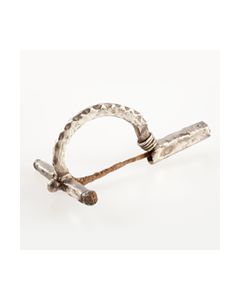 Silberne Armbrust-Fibel um 300 n. Chr.
Silberne Armbrust-Fibel um 300 n. Chr.Römische Fibel vom Typ der Armbrust-Fibeln. Massives Silber, 14,6g, 280 bis 320 n. Chr. Hervorragender Zustand.
Price: on request Group of 10 Roman sestertii from Wishanger hoard
Group of 10 Roman sestertii from Wishanger hoardFound 2021 in East Hampshire, UK. The hoard is a very impressive proof of the fact that coins were in circulation for up to several centuries in the Roman era.
Price: on request Römische Zwiebelknopffibel
Römische ZwiebelknopffibelMassive Zwiebelknopffibel aus Bronze. 23,2 Gramm, aus dem 4 Jh. n. Chr. Ungewöhnliche, kantige Zwiebelknopfverzierung.
Price: on request Marc Antony legionary Denarius from Wishanger hoard
Marc Antony legionary Denarius from Wishanger hoardFound 2021 in East Hampshire, UK. Best condition of the five Marc Antony denarii in the hoard. The hoard is a very impressive proof of the fact that coins were in circulation for up to several centuries in the Roman era.
Price: on request Julius Caesar Denarius from Wishanger hoard
Julius Caesar Denarius from Wishanger hoardElephant trampling on horned snake. Found 2021 in East Hampshire, UK. The hoard is a very impressive proof of the fact that coins were in circulation for up to several centuries in the Roman era.
Price: on request Tiberius denarius (Tribute Penny) from Wishanger hoard
Tiberius denarius (Tribute Penny) from Wishanger hoardFound 2021 in East Hampshire, UK. The hoard is a very impressive proof of the fact that coins were in circulation for up to several centuries in the Roman era.
Price: on request Marc Antony legionary Denarius from Wishanger hoard
Marc Antony legionary Denarius from Wishanger hoardFound 2021 in East Hampshire, UK. The hoard is a very impressive proof of the fact that coins were in circulation for up to several centuries in the Roman era.
Price: on request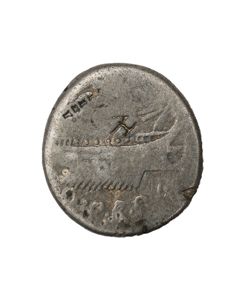 Marc Antony legionary Denarius from Wishanger hoard
Marc Antony legionary Denarius from Wishanger hoardFound 2021 in East Hampshire, UK. The hoard is a very impressive proof of the fact that coins were in circulation for up to several centuries in the Roman era.
Price: on request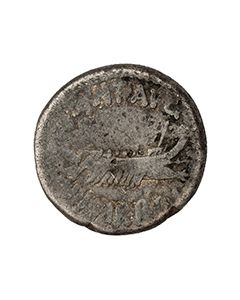 Marc Antony legionary Denarius from Wishanger hoard
Marc Antony legionary Denarius from Wishanger hoardFound 2021 in East Hampshire, UK. The hoard is a very impressive proof of the fact that coins were in circulation for up to several centuries in the Roman era.
Price: on request

